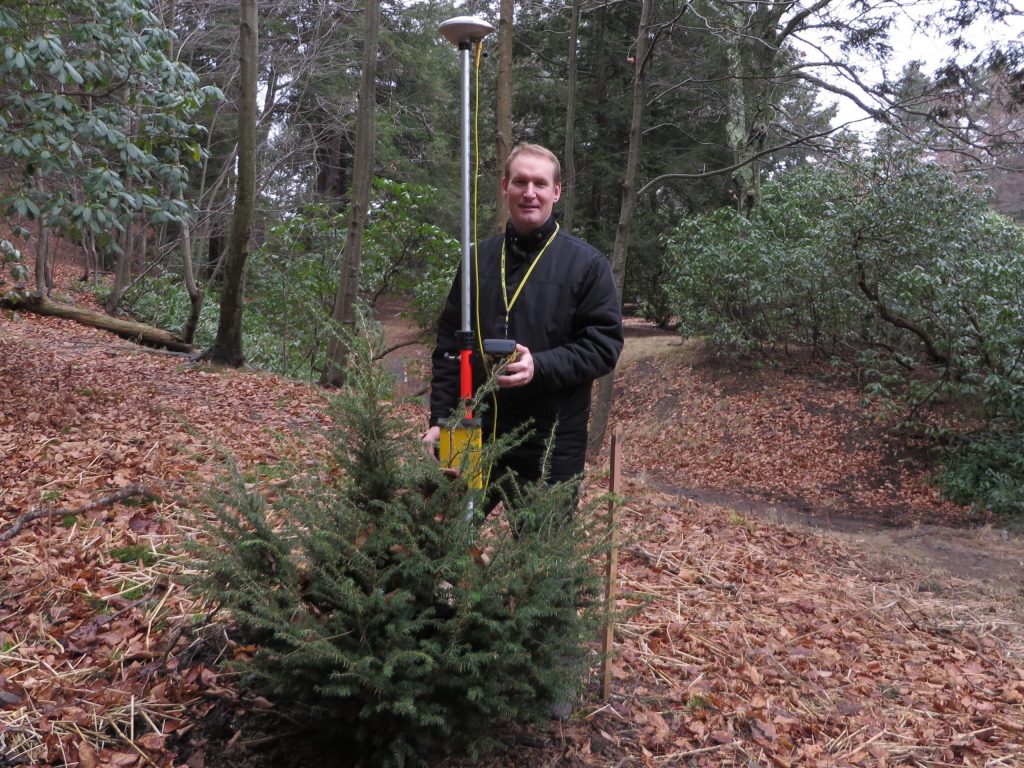Spring production of the Map Book of Living Collections is a time-honored tradition. Printed in grayscale, each of the book’s 343 pages depict the position of natural resources and man-made features. An internal resource, the Map Book informs the management and care of plants in our landscape.

Paper map assets complement our digital cartography and workflows. Practical applications of hardcopy map use include research support, inventory, and new planting aftercare (e.g., watering, pruning). Simply put, many map consumers value an option to navigate the collections using paper verses the digital realm. And should a natural disaster befall our grounds, our spiral bound Map Books are critical to business continuity in the absence of network connectivity.
Maps of the Arboretum landscape are in constant production. Begun in the late 1930s to resolve the “problem” of locating plants used for scientific study, each 24×36 inch paper map framed a 400×600 foot area of the grounds rendered in vivid detail. Well established triangulation and traverse mapping methods ensured plants and hardscape were relative in their position on the map. Today, maps are generated in standard and custom formats using ESRI software—the coordinates of each plant captured with decimeter accuracy using global positioning system (GPS) tools.

Over the last decade, the Arboretum has worked to provide digital access to maps. Our interactive map is the best resource for navigating the collections and provides access to locally curated plant information and the means to create custom maps. For those less inclined to tether themselves to technology, printable maps are available on our website and map tables dot the Arboretum landscape and are a useful collections guide.
Our understanding of the Arboretum is enhanced by maps. As horticulturists busily plant hundreds of new plants in our landscape this spring, curatorial staff look forward to revealing them to you through maps.
From “free” to “friend”…
Established in 1911 as the Bulletin of Popular Information, Arnoldia has long been a definitive forum for conversations about temperate woody plants and their landscapes. In 2022, we rolled out a new vision for the magazine as a vigorous forum for tales of plant exploration, behind-the-scenes glimpses of botanical research, and deep dives into the history of gardens, landscapes, and science. The new Arnoldia includes poetry, visual art, and literary essays, following the human imagination wherever it entangles with trees.
It takes resources to gather and nurture these new voices, and we depend on the support of our member-subscribers to make it possible. But membership means more: by becoming a member of the Arnold Arboretum, you help to keep our collection vibrant and our research and educational mission active. Through the pages of Arnoldia, you can take part in the life of this free-to-all landscape whether you live next door or an ocean away.
